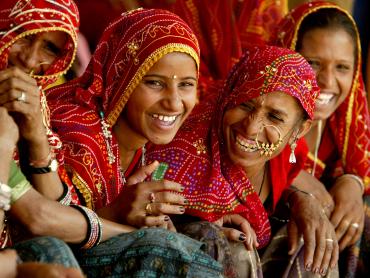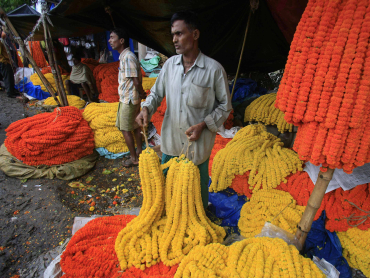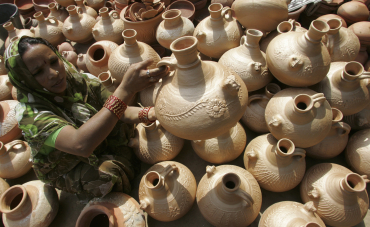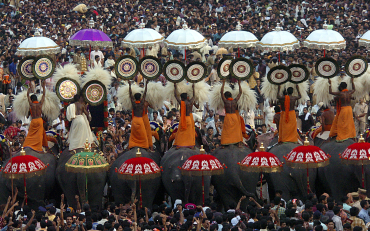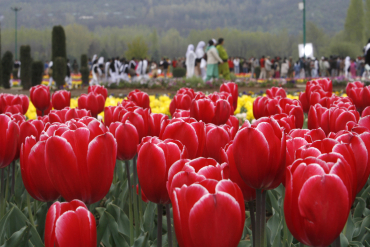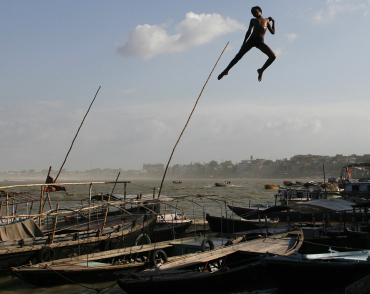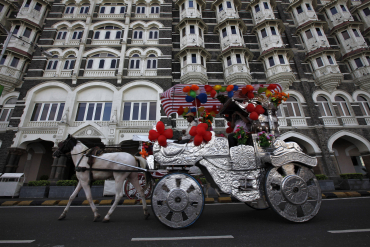 | « Back to article | Print this article |
The SAD state of 'other' India
While it is true that India is witnessing booming economic growth -- the projected 8 per cent growth rate is one of the highest in the world -- it is equally true that many Indians continue to struggle to make ends meet.
Out of a population of 1.2 billion, about 400 million are still living on a dollar a day; basic amenities, such as sanitation, are grossly inadequate; healthcare and education sectors, especially in rural areas, are failing to meet demand; and migration to cities continues to increase every year.
There are many reasons for this woeful state, but the major ones are bad governance, corruption, short-sighted policies and the convoluted political system.
So, while prices of all commodities continue to rise and inflation refuses to come down, our politicians are becoming multi-millionaires, some of them in less than two years time in government.
Let us have a look at the other India.
Click NEXT to read more...
The sad state of rural India
Fact-sheet
Population: 1.21 billion
Population growth: 1.34 per cent
Urban population: 30 per cent
Rate of urbanisation: 2.4 per cent
Infant mortality rate: 47.57 deaths per 1,000 live births
Life expectancy at birth: 66.8 years
Literacy rate: 61 per cent
School life expectancy: 10 years
Education expenditure: 3.1 per cent
Click NEXT to read more...
The sad state of rural India
Education
Gross enrolment rate in pre-school: 18 per cent
Drop out rates: 48 per cent in elementary education
Infrastructure: 24 per cent schools do not have proper buildings and eight per cent do not have drinking water facilities
Standard of education: Eight per cent aged 7 to 12 cannot read a paragraph
Participation: At the lower secondary level (grades nine and 10), enrolment rate is 52 per cent, while at the senior secondary level (grades 11 and 12), it is 28 per cent
Access: Number of secondary schools is almost half the number of upper primary schools available in the country
Private education: Share of private institutions is seven per cent, upper primary 21 per cent and secondary 32 per cent
(Source: Fortress Team Research)
Click NEXT to read more...
The sad state of rural India
Healthcare
Growth of healthcare: 16 per cent in the 1990s
Value of the sector: $34 billion
Projected growth: $40 billion by 2012
Share of private sector: 80 per cent of total spending.
Private firms are now thought to provide about 60 per cent of all outpatient care and as much as 40 per cent of all in-patient care.
It is estimated that nearly 70 per cent of all hospitals and 40 per cent of hospital beds are in the private sector
Public hospitals: Of the 15,393 hospitals in 2002, two-thirds are in the public sector
Community health centres: India needs 74,150 community health centres per million but has less than half that number
Click NEXT to read more...
The sad state of rural India
Laboratories: 11 states do not have laboratories for testing drugs, and more than half of existing laboratories are not properly equipped or staffed
Hospital beds in urban areas: 178.78 per 100,000
Hospital beds in rural areas: 9.85 per 100,000
Hospitals in urban areas: 3.6 per 100,000
Hospitals in rural areas: 0.36 per 100,000
Dispensaries in urban areas: 3.6 per 100,000
Dispensaries in rural areas: 1.49 per 100,000
Indebtedness: It is estimated that 20 million fall below the poverty line each year because of indebtedness due to healthcare needs
(Source: PricewaterhouseCoopers)
Click NEXT to read more...
The sad state of rural India
Unemployment
Unemployment rate: 9.4 per cent of the total labour force, not the total population
Unemployed: 40 million
Total population in working age of 15-59: 63.5 per cent
Male unemployment: 8 per cent
Female unemployment: 14.6 per cent
Urban unemployment: 7.3 per cent
Rural unemployment: 10.1 per cent
State with highest unemployment: Goa
(Source: Labour Bureau, Government of India)
Click NEXT to read more...
The sad state of rural India
Slums
Total slum population: 40 million
Population living in slums: 4 per cent
Children aged between 0-6 living in slums: 5 million
Growth of slums in India: 697 million in 1990, 923 million in 2000 and 2 billion by 2030
Top cities with slum population: 55 per cent in Mumbai, 44 per cent Meerut and 40 per cent in Pune
Click NEXT to read more...
The sad state of rural India
Sanitation
Population without sanitation: 600 million
Percentage with sanitation: 55 per cent
Population in rural areas without sanitation: 74 per cent
Sewers built to handle three million of New Delhi s population
Sewers handling 14 million of New Delhi's population
Percentage of wastewater treated in India: 30 per cent
Water pollution: Three-fourths of surface water is polluted
Investment in rural sanitation in 2004: $90 million
Investment in rural sanitation in 2008: $280 million
(Source: Asian Development Bank)
Click NEXT to read more...
The sad state of rural India
Urbanisation
One of the biggest challenges facing India is the rapid, and unchecked, growth of urban areas. From New Delhi to Chennai to Kolkata, cities are growing at breakneck speed and that is putting enormous pressure on the existing infrastructure.
The rapid growth is also testing the social fabric of these cities. So, while the original inhabitants of cities like Mumbai and Kolkata blame the continuous influx of outsiders for the overcrowding, do these migrants have a choice?
From the government to private corporations and everybody in between is focused solely on urban areas, while completely ignoring any kind of development in rural areas.
And, it is not only the metros that are witnessing influx of people; even cities like Lucknow are creaking under the overload.
So, what is the solution? As long as people in rural areas do not have access to good schools, to functioning hospitals to electricity, to employment opportunities, etc, they would continue to move to cities.
The government can go on pouring money on infrastructure projects in urban areas, but as long as it does not focus on rural areas, all projects will fall well short of demand.
Let us have a look at growth in population in four major cities: Bengaluru, New Delhi, Chennai and Mumbai.
Click NEXT to read more...
The sad state of rural India
Bengaluru
Population in 2011: 9.59 million
Growth rate: 46.68 per cent
Click NEXT to read more...
The sad state of rural India
New Delhi
Population in 2011: 16.80 million
Growth rate: 20.96 per cent
Click NEXT to read more...
The sad state of rural India
Chennai
Population in 2011: 5.30 million
Growth rate: 7.65 per cent
Click NEXT to read more...
The sad state of rural India
Mumbai
Population in 2011: 20.50 million
Growth rate: 4.2 per cent
